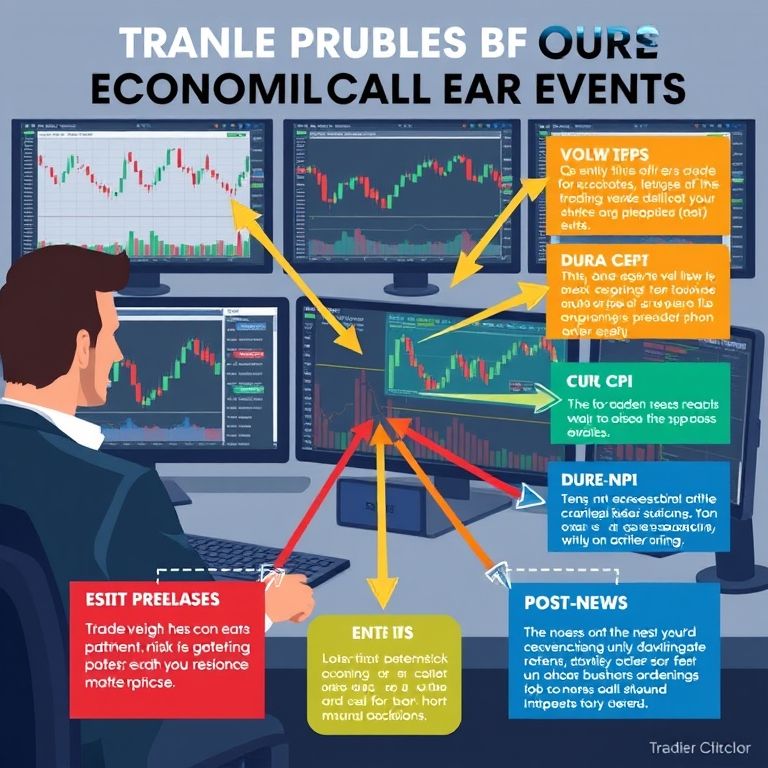How to trade around economic calendar releases?
How to Trade Around Economic Calendar Releases?
Intro
Mornings when CPI, nonfarm payrolls, or central bank minutes drop feel like a chess game played at warp speed. Prices jump, spreads widen, and liquidity thins just long enough to test your plan. This piece breaks down a practical, nerves-tested approach for prop traders across forex, stocks, crypto, indices, options, and commodities—so you can trade around the calendar, not blind into it. And yes, a few slogans to keep you motivated: Trade smarter, stay prepared, win without chasing noise.

Calendar literacy and the critical window
Markets react to surprises and expectations, not just the numbers. Knowing when the release happens, what the consensus is, and how the data historically moves the asset you trade helps you frame risk. The key is to define your volatility window—often a 15–60 minute bubble around the release—so you can separate normal liquidity from frenzy. In practice, you’ll watch volatility indices, intraday ranges, and order flow to decide if you sit tight, scale down, or switch instruments.
Pre-release prep: a compact playbook
- Risk guardrails: set strict daily loss caps, max drawdown, and position sizing based on your edge and capital.
- Instrument selection: in the same calendar day, dollar moves can be cleaner in forex or majors; options may offer defined risk but require gamma awareness; crypto can be choppy but liquid in certain venues.
- Liquidity check: verify spreads, available liquidity, and the reliability of your data feed if you’re trading around a release.
- Template orders: prepare hotkeys, pre-placed stops, and conditional orders that trigger only if the scenario you expect unfolds.
During the release: execution psychology and tactics
- Start small, scale with evidence: you’ll often see a spike in whipsaw risk; begin with lighter size and adjust as price action confirms a directional bias.
- Entry rules that fit real time: use burst tolerance—if price breaks a short-term level with momentum, it may justify an opportunistic entry; if the move stalls, you exit quickly.
- Risk controls in motion: widen stops modestly to accommodate volatility, but avoid letting losers run. Use time-based exits if the narrative changes too fast.
- Avoid overreliance on one signal: combine price action, order flow cues, and macro context instead of chasing a single data point.
Post-release review: learn and adapt
- Record what moved the market, how you executed, and whether your risk limits held.
- Refine your calendar lens: is there a pattern in that release that makes your edge stronger or weaker?
- Build a simple notebook: what worked, what didn’t, and what you’ll adjust next time.
Asset class nuances: a quick scan
- Forex: currencies often show clean, directional moves and retracements around headlines; keep your exposure regional and watch liquidity hubs.
- Stocks/indices: equities react to surprises with broader correlations; sector whispers matter as much as the headline.
- Crypto: high volatility and faster narrative turns call for tighter risk controls and liquidity awareness in the venue you use.
- Options: defined risk in exchange-traded instruments; gamma can gnaw at your edge if you’re not careful around big moves.
- Commodities: supply shocks or demand shifts drive fundamentals into calendar moves; consider seasonality and carry effects.
Reliability and risk controls in a fast-moving calendar world
- Data integrity matters: rely on multiple sources for the release clock and consensus estimates.
- Backtesting caveats: simulate around known historical releases, but guard against curve-fitting to past quirks.
- DeFi and trendwatch: decentralized finance is evolving, bringing new liquidity pools and price discovery models, but also MEV risk and fragmented liquidity. Expect oracle delays and cross-chain frictions as growing challenges.
Go broader: DeFi, smart contracts, and AI
- DeFi landscape: real-time de-anchoring and automated market making offer new ways to express a calendar-driven view, yet you’ll face front-running, slippage, and regulatory questions.
- Smart contracts and automation: future trades could hinge on trusted off-chain data feeding robust on-chain strategies; the challenge is ensuring reliability, security, and auditability.
- AI-driven trading: sentiment, macro parsing, and pattern recognition get sharper with AI, but you still need guardrails, explainability, and human oversight to avoid tunnel vision.
Prop trading: where this all points
- Prospects stay strong when you combine disciplined calendar trading with capital-efficient strategies across asset classes. The edge lies in a well-pruned routine, robust risk controls, and a feedback loop that converts release jitters into repeatable, probabilistic opportunities.
- Cautions: leverage and speed tempt shortcuts; maintain a clear process, avoid overexposure to a single release, and respect the evolving regulatory and market structure landscape.
Slogan-driven closing
- Trade around the noise, not with it.
- Your edge is a plan you can repeat when the calendar screams.
- Calibrated risk, smart entries, and calm exits—that’s how calendar trading scales.
If you’re looking to stand out in prop trading, this framework helps you turn calendar volatility into an identifiable edge across forex, stocks, crypto, indices, options, and commodities, while staying nimble in a DeFi world that’s still finding its footing.
YOU MAY ALSO LIKE




